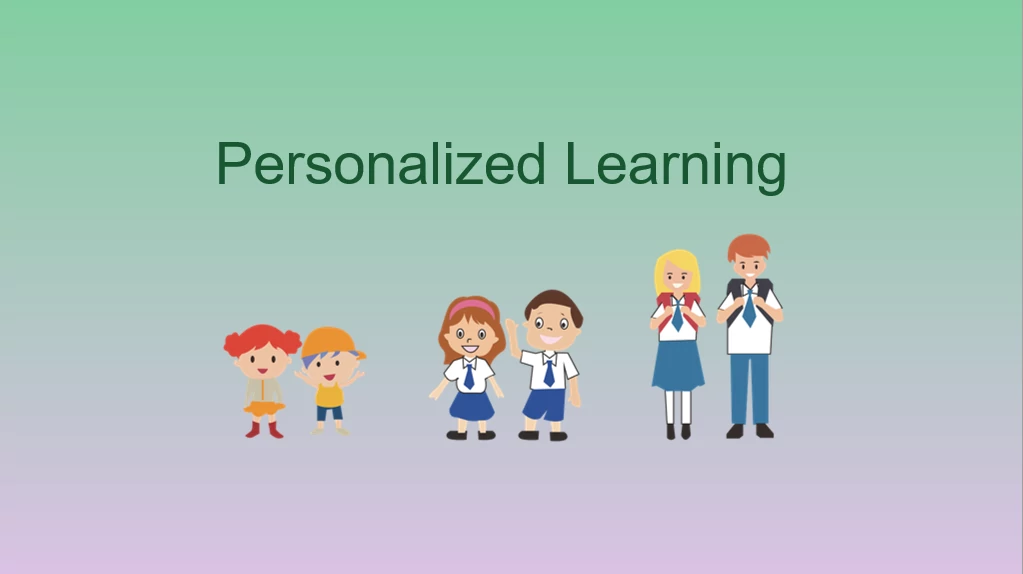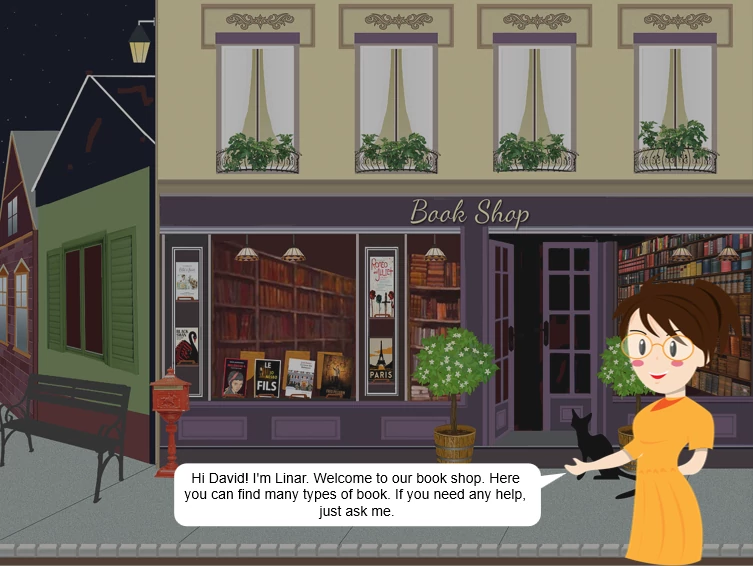Personalized learning has been around for ages. Now it becomes one of the big eLearning trends. So, what is personalized learning? Why should you try it? And how can you use personalized learning in designing eLearning courses? This article will give you all information you need to know about this eLearning trend.
What is Personalized Learning?
Many experts picked personalized learning as one of their top 3 eLearning trends this year. According to them, the rise of personalized learning proved the fact that “one size always doesn’t fit all”.
Here is an example of using personalized learning in eLearning. Created with ActivePresenter 8, this course makes use of the user name and employer to add a touch of personalization. So, learners may feel more inspired to join the course.
Here is a definition of personalized learning from Docebo:
“The diverse variety of instruction programs, learning experiences, didactic approaches, and support strategies intended to address the unique and individual learning needs, interests, and aspirations of individual learners”.
In a word, personalized learning is a learner-centered education. It makes learners become the center of the learning path. Then, everything else is designed to meet their strengths, needs, and interests. This way, learners have their “voice and choice” in determining what, how, when, and where they want to learn. All these things are reflected in the word “personalized”.
Consequently, adopting personalized learning also makes teachers’ role change. They are now learning facilitators, not just lecturers who merely deliver lessons. Simply put, they have to take on many jobs, for example:
- Spend time getting to know each student, including his/her personalities, strengths, interests, and goals.
- Make decisions and strategies to design effective courses which fit each individual learning style.
- Learn how to apply technology in course design and teaching.
In eLearning design, personalized learning carries a whole new meaning. That is, it is the act of customizing elements below:
- Learning contents such as text, image, audio, video.
- Interactions such as simulations and drag-n-drop quizzes.
- Interactions between learners and teachers like feedback and online discussions.
With these in mind, there are several ways to apply personalized learning in eLearning design. The following parts will discuss advantages of personalized learning and tips to design it in real life.
Advantages of Personalized Learning in eLearning
No one is precisely like anyone else. Every person has different needs, interests, and learning paths. Their ages, demographics, and cultural background aren’t even similar to each other. Hence, using personalized learning is clearly more effective than a uniform learning approach in many ways.
Here are major benefits of personalized learning in eLearning design.
Deliver Targeted Learning
Human beings are naturally needs-based. We want things which can meet our own needs. We don’t expect things which are irrelevant to us. This is also true when it comes to learning. We have a right to decide what/when/where/how to learn. We prefer learning intentionally.
Based on this fact, personalized learning is a good choice to provide a targeted learning experience. Using it means you consider learners’ role, need, experience, and skill level. This can be done through making pre-tests. You give learners these tests before taking eLearning courses. Then, use results to decide whether learners can attend the advanced courses. Or, they need to build a solid foundation of knowledge before reaching a higher level.
Increase Learner Engagement
When learners have a choice to control what they want to learn, they are more motivated to learn. They no longer have to join courses which may be not relating to them. Instead, they’re free to go with only the courses they need to thrive. They know exactly what they want and make decision to focus on them. This is the cornerstone of applying personalized learning in eLearning design.
In personalized learning, learners are given choices. That is, they’re free to pick up a lesson, skip unwanted information, customize their learning space, etc. No one can force them to learn what they don’t want. Besides, they take a proactive role in their education and study at their natural pace. Hence, they can dedicate their time and full attention to learning. Personalized learning undoubtedly helps learners find their spark and make their own fire.
Provide a Flexible Learning Environment
Personalized learning provides the learner with great flexibility in many ways.
- Learn at his own path. He can go at a slower or faster pace according to his needs. The learner no longer follows teachers’ lead in a tight timeline.
- Choose his own learning path. A lot of methods or resources to reach a learning goal is at his disposal. Besides, teachers can structure a customized path for their learners to help them fill the gap or escalate challenge.
- Take the tasks he wants to demonstrate understanding. Hence, he has chances to apply knowledge in authentic and relevant contexts.
It’s clear that personalized learning has potential to change the lives of many learners.
Tips to Use Personalized Learning in eLearning Design
You may see some signs of personalized learning here and there. In fact, just personalizing few elements can create differences for any eLearning course. Below are practical tips to adopt personalized learning. Make use of them to build personalized eLearning courses you want.
1. Personalize Learners
Make your course “personal” to each learner. There are many ways to do that. For example, capture his/her name as a part of the registration process (e.g. “Welcome, David!”) rather than using a generic name (e.g. “Welcome, Student A”). Or, ask the learner to sign on with his/her name, and then use the name throughout the course (e.g. “Well done, David!”). All of these things can be done using variables which many professional eLearning authoring tools now support. Couldn’t be any easier!
2. Personalize Learning Goals
Everyone has his own purpose to learn. So, as teachers, you should make learning objectives relevant to why learners take a course. For example, you can build courses for Junior Manager, Senior Manager, Supervisor, etc. So, if the career goal is to move from Junior to Senior, your learner will know exactly which course he should join.
3. Personalize Learning Space
To maximize learning potential, learning environment should be open, comfortable, and visually stimulating. Additionally, it’s a good strategy to let learners customize their learning space. For example, allow them to pick their avatar, edit personal information, change the course theme, choose voices (male or female) for audio contents, etc.
4. Personalize Learning Path
A good way to create a personalized learning path is apply non-linear eLearning design. This term refers to learners’ freedom of choice about eLearning activities that best suit their needs and complete modules at their own pace. Learners can follow their curiosity and jump into any section which benefits them most.
To design effective non-linear eLearning courses, you can use branched scenarios, user-friendly navigation tools, etc. Besides, allow learners to skip certain segments of a course and start learning what they need. Don’t force learners to learn what they already know.
5. Personalize Contents
As mentioned above, using pretests offers you clues to personalize contents effectively. You can use results to create contents which match with individuals’ needs. This process takes time but it will pay off in the long run.
When it comes to personalizing contents, consider using multiple types of content if possible. For instance, some learners learn quickly when watching a short video. Some absorb information mostly through reading rather than listening. Others love noting down information while consuming knowledge. In that case, giving choices like “View“, “Listen“, “Practice” or “Print” is so sweet!
6. Personalize “Conversations”
There are several ways to create “talks” with learners and make them personal in eLearning. The simplest is add common words to build intimacy. For example, use phrases like “Now, let’s click Done, David” to end the test, instead of “Click Done to finish”. Clearly, the former is more personalized than the latter.
Added to that, you can introduce yourself to the learner. For example, “Hi David, I’m Linar. I’m your teacher. If you need any help, call me anytime by clicking Help button”. That way, a learner feel like you are talking with him/her only.
7. Personalize Feedback Messages
Feedback messages help learners know what they did right or wrong and give them hints for future success. But not all learners experience the same level of success in a course. So, remember to vary these messages to each individual. This way, they can learn from their own mistakes and improve.
When providing feedback, mind the following:
- Show feedback at the right time and right place.
- Give your feedback in a form of a statement, not a question.
- Use clear and relevant feedback instead of an abstract or vague one.
- Don’t give only positive or only negative feedback. Instead, provide learners with constructive feedback.
Personalized learning continues to gain prominence in eLearning design this year. Using it means that you actually care about learners’ learning needs. Wherever you are in your personalized learning journey, we are always happy to support you. Try ActivePresenter today, and start to create personalized eLearning courses you want.
Related Articles:


